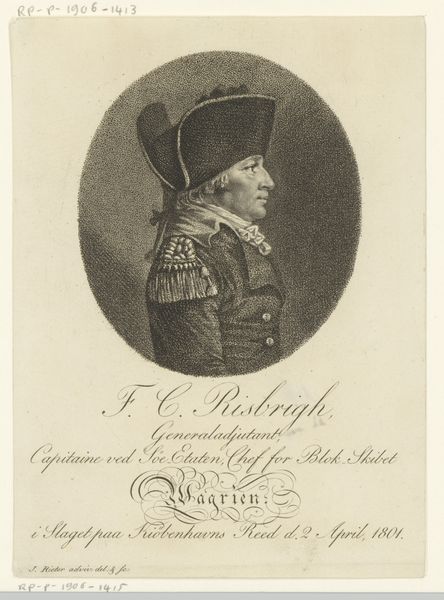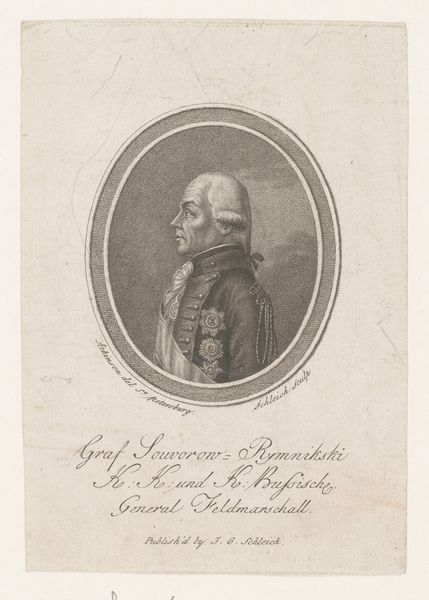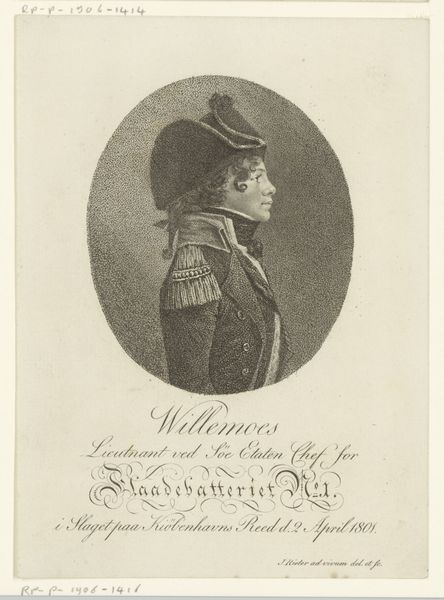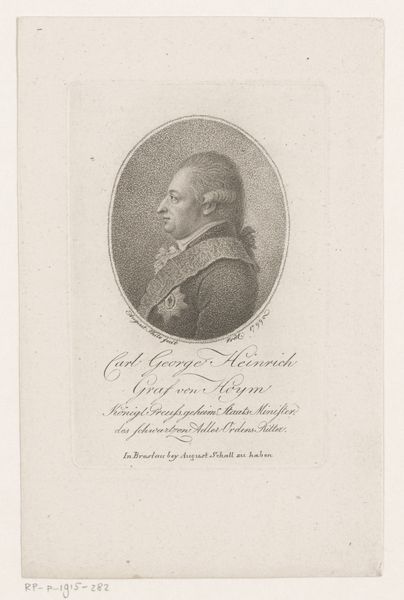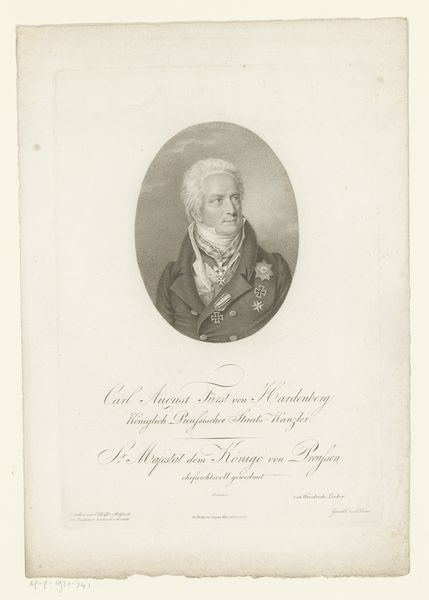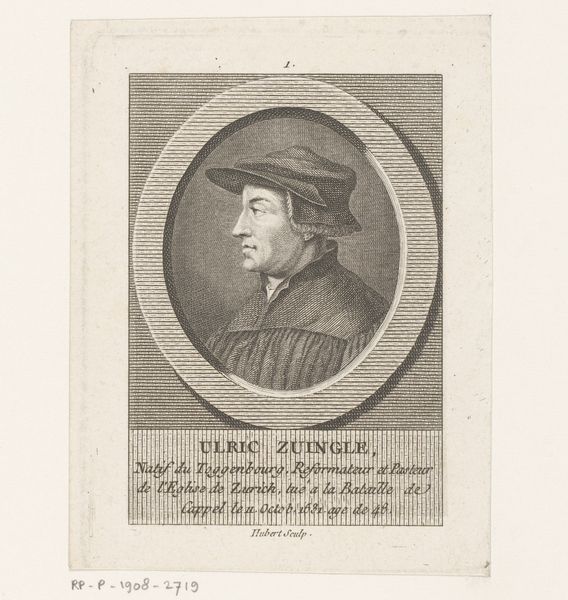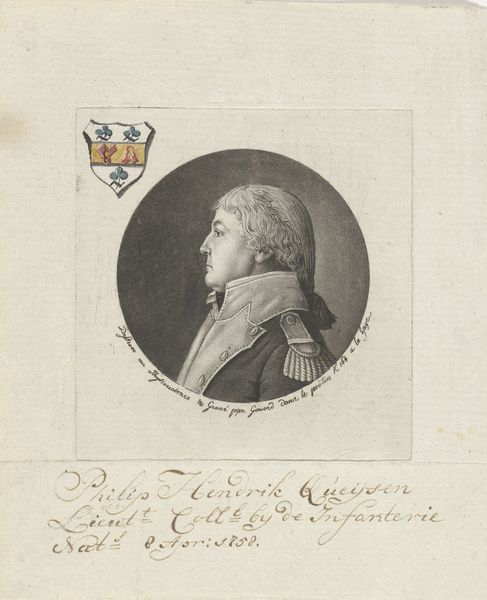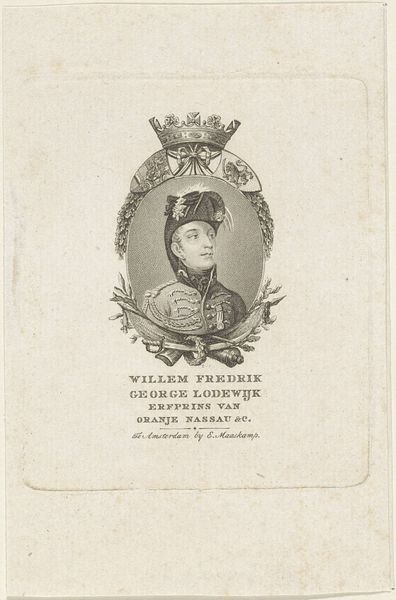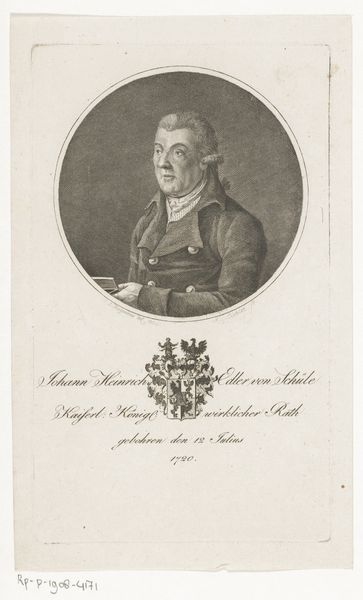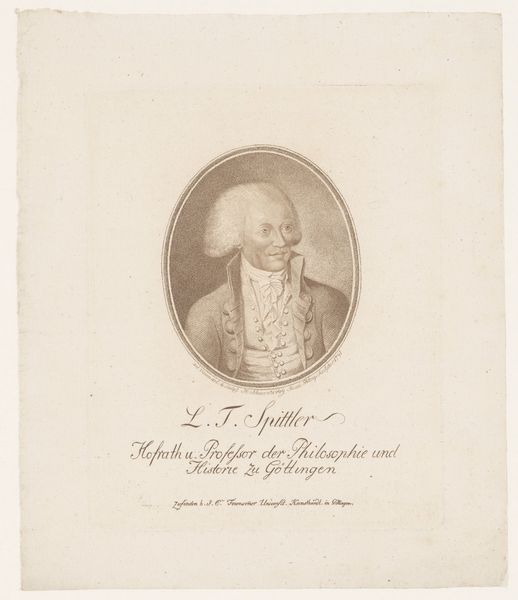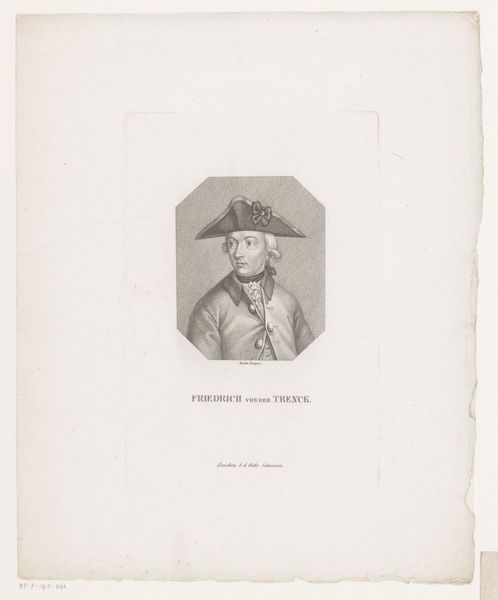
drawing, print, engraving
#
portrait
#
pencil drawn
#
drawing
#
neoclacissism
# print
#
pencil sketch
#
old engraving style
#
pencil work
#
engraving
Dimensions: width 180 mm, height 136 mm
Copyright: Rijks Museum: Open Domain
Curator: Here at the Rijksmuseum, we have a captivating engraving, "Portret van H.H. Kofoed," created by Johann Jakob Rieter sometime between 1801 and 1823. Editor: My first thought is somber elegance. The precise lines, the shading… it feels very formal, almost austere, yet there’s a human presence struggling to peek through. Curator: Indeed. Rieter's choice of engraving allows us to explore the reproduction and dissemination of images in that period. Engravings made it possible to produce multiple copies, extending the reach and influence of portraiture. Think about the socio-economic implications! Editor: Absolutely. And placing it within a socio-historical context reveals volumes. Look at Kofoed’s uniform, indicative of status and authority within a rigidly structured society. What power dynamics were at play when representing individuals like him? Curator: The details of his attire – the elaborate hat, the frogged coat, and the epaulettes – speaks volumes about craftsmanship and material culture during that time. One can analyze the production and trade routes that made such garments possible, a whole system of labour that portraiture often conceals. Editor: And beyond just documenting a likeness, it's shaping narratives of power. These portraits served to reinforce societal hierarchies and legitimize authority, all wrapped up in artistry. The engraving as both artwork and propaganda tool, wouldn’t you say? Curator: I think it fair to suggest that while there might have been some intention to represent authority it simultaneously presents material realities about access, display, and economic class distinctions that circulated through the system of making and displaying prints. Editor: Considering how art is interwoven with social commentary, pieces such as these urge a continued evaluation of how the dynamics of identity and power influence artistic production and consumption. Curator: I agree completely. Close attention to detail reveals subtle evidence of a moment frozen in time that can disclose a lot about the making of an object. Editor: Precisely, providing a context beyond just its surface and making it feel vital even now.
Comments
No comments
Be the first to comment and join the conversation on the ultimate creative platform.


